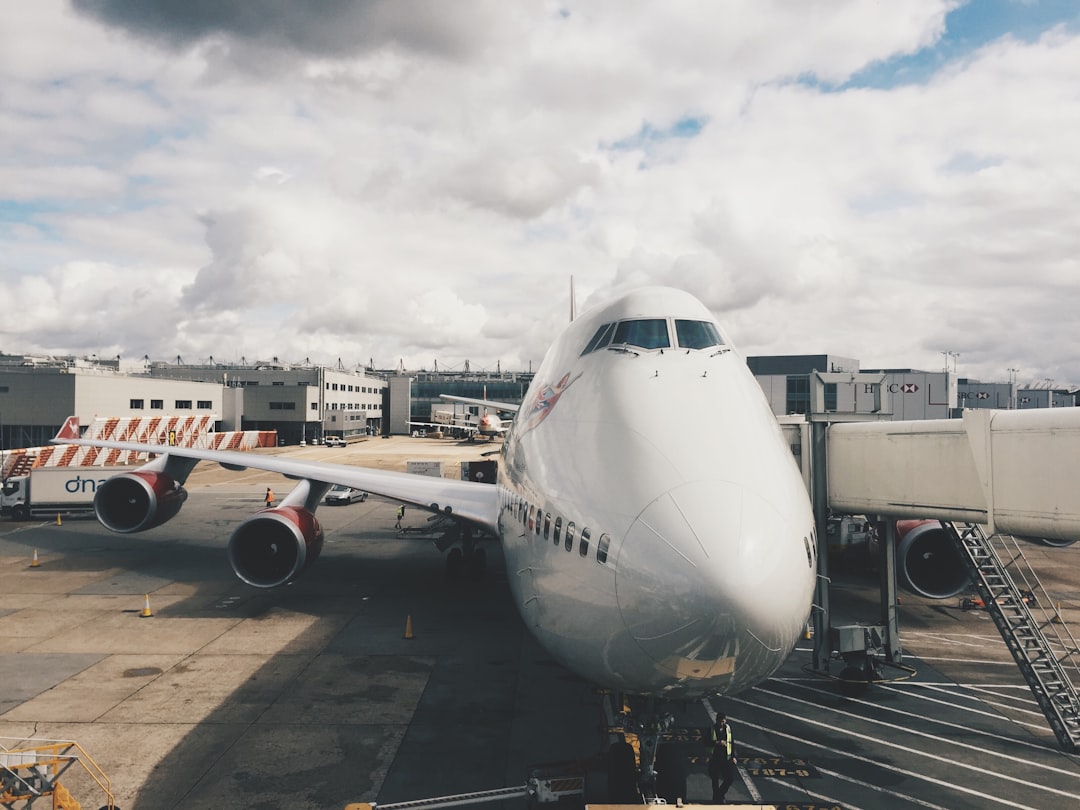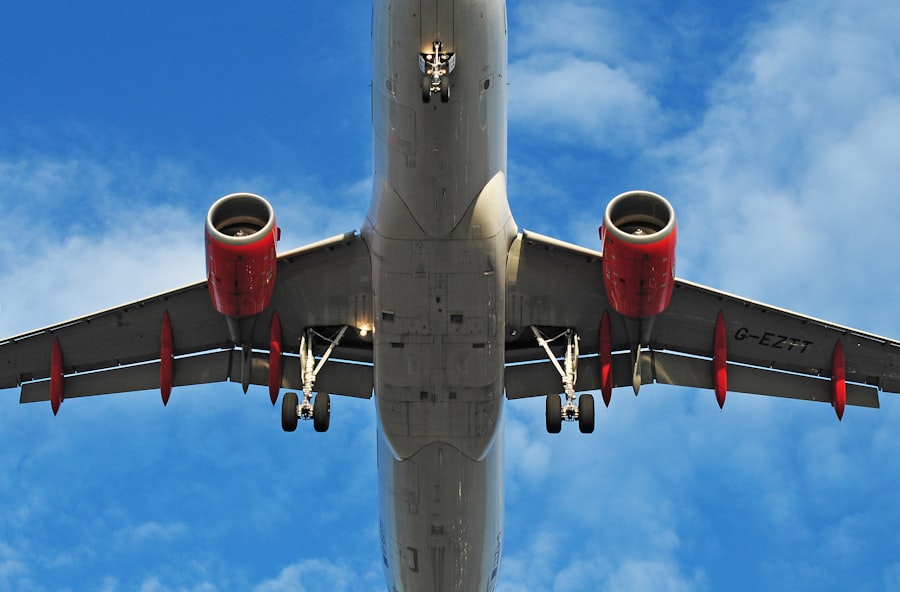
An Airframe-and-Power-Plant (A&P) mechanic is a specialized technician responsible for the maintenance, repair, and overhaul of aircraft structures and engines. This dual certification allows these professionals to work on both the airframe, which includes the aircraft’s fuselage, wings, and landing gear, and the power plant, which encompasses the engines and associated systems.
The responsibilities of an A&P mechanic are diverse and can range from conducting routine inspections to performing complex repairs. They must be adept at troubleshooting issues that may arise in various aircraft systems, including hydraulic, electrical, and fuel systems. The role requires a deep understanding of aviation regulations and standards set forth by organizations such as the Federal Aviation Administration (FAA) in the United States.
A&P mechanics often work closely with pilots and other aviation professionals to ensure that all maintenance activities comply with safety protocols and operational guidelines.
Key Takeaways
- An Airframe-and-Power-Plant Mechanic is responsible for maintaining and repairing aircraft, including the airframe, engines, and avionics systems.
- Educational requirements for becoming an Airframe-and-Power-Plant Mechanic include completing a Federal Aviation Administration (FAA)-approved aviation maintenance technician school or gaining relevant work experience.
- The job outlook for Airframe-and-Power-Plant Mechanics is strong, with a median annual wage of around ,090, according to the U.S. Bureau of Labor Statistics.
- Specializations within the field include working on specific types of aircraft, such as commercial airplanes or helicopters, and career paths can lead to roles in management or inspection.
- Skills and qualities needed to succeed as an Airframe-and-Power-Plant Mechanic include attention to detail, problem-solving abilities, and strong technical and mechanical skills.
- Airframe-and-Power-Plant Mechanics work in a variety of environments, including hangars, repair stations, and airports, and are responsible for conducting inspections, performing maintenance, and troubleshooting aircraft issues.
- Advantages of pursuing a career as an Airframe-and-Power-Plant Mechanic include job stability and the opportunity to work with cutting-edge technology, while challenges may include working in demanding conditions and adhering to strict safety regulations.
- Steps to start a career as an Airframe-and-Power-Plant Mechanic in the USA include completing an FAA-approved training program, gaining work experience, and obtaining the necessary certifications and licenses.
Educational Requirements and Training for Airframe-and-Power-Plant Mechanics
Curriculum and Training
The curriculum typically includes both classroom instruction and hands-on training, covering topics such as aerodynamics, aircraft systems, and maintenance procedures. Students learn about the various components of aircraft and how they interact, as well as the principles of flight and the mechanics of engines.
Practical Experience Requirements
In addition to formal education, aspiring A&P mechanics must accumulate a certain number of hours of practical experience. The FAA requires candidates to have at least 1,900 hours of training in an FAA-approved program or 30 months of practical experience working under the supervision of a certified mechanic.
Enhancing Employability
Many programs also offer opportunities for internships or apprenticeships, providing valuable exposure to the aviation industry and enhancing employability upon graduation.
Job Outlook and Salary Potential for Airframe-and-Power-Plant Mechanics

The job outlook for A&P mechanics is promising, with the Bureau of Labor Statistics (BLS) projecting a steady growth rate in employment opportunities over the next decade. As air travel continues to increase globally, the demand for skilled mechanics who can maintain and repair aircraft is expected to rise correspondingly. Factors such as an aging workforce and the need for ongoing maintenance of existing aircraft fleets contribute to this positive outlook.
Additionally, advancements in technology may create new opportunities for A&P mechanics to work on modern aircraft systems. In terms of salary potential, A&P mechanics can expect competitive compensation that varies based on factors such as experience, location, and type of employer. According to BLS data, the median annual wage for aircraft and avionics mechanics was approximately $66,000 as of May 2022.
Those working in industries such as scheduled air transportation tend to earn higher salaries compared to those in other sectors. Furthermore, experienced mechanics with specialized skills or certifications may command even higher wages, reflecting their expertise in specific areas of aircraft maintenance.
Specializations and Career Paths within the Field
| Specialization | Career Paths |
|---|---|
| Data Analysis | Data Analyst, Business Analyst, Market Research Analyst |
| Data Science | Data Scientist, Machine Learning Engineer, AI Specialist |
| Data Engineering | Data Engineer, Database Administrator, ETL Developer |
| Business Intelligence | BI Developer, Data Visualization Specialist, Reporting Analyst |
Within the realm of airframe-and-power-plant mechanics, there are several specializations that professionals can pursue to enhance their career prospects. One common specialization is avionics, which focuses on the electronic systems used in aircraft, including navigation, communication, and flight control systems. Avionics technicians are responsible for troubleshooting and repairing these complex systems, requiring a strong understanding of electronics and computer technology.
Another area of specialization is structural repair, where mechanics focus on the physical integrity of the aircraft’s airframe. This may involve repairing or replacing damaged components due to wear and tear or accidents. Additionally, some A&P mechanics choose to specialize in specific types of aircraft, such as helicopters or commercial jets, allowing them to develop expertise in particular systems or technologies unique to those aircraft types.
These specializations not only enhance job prospects but also provide opportunities for career advancement into supervisory or management roles within aviation maintenance organizations.
Skills and Qualities Needed to Succeed as an Airframe-and-Power-Plant Mechanic
To thrive as an A&P mechanic, individuals must possess a unique blend of technical skills and personal qualities. Strong problem-solving abilities are essential, as mechanics often encounter complex issues that require analytical thinking and creativity to resolve. Attention to detail is another critical skill; even minor oversights can lead to significant safety risks in aviation.
A&P mechanics must meticulously follow maintenance procedures and adhere to regulatory standards to ensure that all work is performed correctly. In addition to technical skills, effective communication is vital for A&P mechanics. They must be able to convey technical information clearly to colleagues, pilots, and other stakeholders.
This includes documenting maintenance activities accurately and providing detailed reports on repairs or inspections performed. Furthermore, physical stamina and dexterity are important attributes for this profession, as mechanics often work in confined spaces or at heights while handling heavy equipment and tools.
Work Environment and Job Responsibilities of Airframe-and-Power-Plant Mechanics

Work Environment
The work setting can vary significantly depending on the type of employer. For instance, those employed by commercial airlines may spend most of their time in large hangars equipped with advanced tools and technology. Conversely, those working for smaller repair shops may have a more hands-on approach with a wider range of tasks.
Job Responsibilities
The job responsibilities of A&P mechanics encompass a wide array of activities aimed at ensuring aircraft safety and performance. Routine inspections are a fundamental part of their duties; these inspections involve checking various systems for wear or damage according to FAA regulations. Mechanics also perform scheduled maintenance tasks such as oil changes, tire replacements, and engine overhauls.
Troubleshooting and Problem-Solving
In addition to these routine tasks, A&P mechanics are often called upon to troubleshoot unexpected issues that arise during flight operations or pre-flight checks. Their ability to diagnose problems quickly and accurately is crucial in minimizing downtime for aircraft.
Advantages and Challenges of Pursuing a Career as an Airframe-and-Power-Plant Mechanic
Pursuing a career as an A&P mechanic offers several advantages that can be appealing to individuals interested in aviation. One significant benefit is job stability; as air travel continues to grow globally, the demand for skilled mechanics remains strong. This stability can translate into long-term employment opportunities with competitive salaries and benefits packages.
Additionally, A&P mechanics often enjoy a dynamic work environment where no two days are alike; they may work on different aircraft types or tackle various maintenance challenges regularly. However, there are also challenges associated with this career path. The work can be physically demanding; mechanics may spend long hours on their feet or work in uncomfortable positions while performing repairs.
The need for precision means that even minor mistakes can have serious consequences; thus, the pressure to maintain high standards can be stressful at times. Furthermore, staying current with evolving technologies and regulations requires ongoing education and training, which can be time-consuming but is essential for career advancement.
Steps to Take to Start a Career as an Airframe-and-Power-Plant Mechanic in the USA
Starting a career as an A&P mechanic involves several key steps that aspiring professionals should follow. First and foremost, individuals should research FAA-approved educational programs that offer comprehensive training in airframe-and-power-plant maintenance. Enrolling in a reputable program will provide the foundational knowledge necessary for success in this field.
After completing an educational program, candidates must gain practical experience through internships or apprenticeships under certified mechanics. This hands-on training is crucial for developing the skills needed to pass the FAA certification exams required for licensure as an A&P mechanic. Once candidates have met the experience requirements, they can apply for the FAA examinations—one for airframe certification and another for power plant certification.
Upon successfully obtaining both certifications, newly minted A&P mechanics can begin their careers by seeking employment with airlines, repair stations, or government agencies involved in aviation maintenance. Networking within the industry through job fairs or professional organizations can also enhance job prospects. Continuous learning through workshops or additional certifications will further bolster career advancement opportunities within this dynamic field.
If you are interested in learning more about careers in the USA as an Airframe-and-Power-Plant Mechanic, you may want to check out this related article on careersintheusa.com.
It is a great resource for anyone considering a career in aviation maintenance.
FAQs
What is an Airframe-and-Power-Plant (A&P) mechanic?
An A&P mechanic is a certified professional who is responsible for the maintenance, repair, and inspection of aircraft and their engines.
What are the educational requirements to become an A&P mechanic?
To become an A&P mechanic, individuals must complete a Federal Aviation Administration (FAA)-approved aviation maintenance technician school or have at least 18 months of practical experience working on either airframes or powerplants, or 30 months of practical experience working on both at the same time.
What are the job responsibilities of an A&P mechanic?
A&P mechanics are responsible for conducting routine inspections, performing necessary repairs, and ensuring that aircraft are in compliance with FAA regulations. They also troubleshoot and diagnose mechanical and electrical issues, and may be required to work on engines, brakes, landing gear, and other aircraft systems.
What are the career prospects for A&P mechanics in the USA?
The demand for A&P mechanics in the USA is expected to grow in the coming years due to the increasing number of aircraft in operation. A&P mechanics can find employment opportunities with airlines, aircraft manufacturers, maintenance and repair organizations, and government agencies.
What is the average salary for A&P mechanics in the USA?
According to the U.S. Bureau of Labor Statistics, the median annual wage for aircraft mechanics and service technicians, including A&P mechanics, was $64,310 in May 2020. The highest 10 percent earned more than $100,590, while the lowest 10 percent earned less than $38,320.



